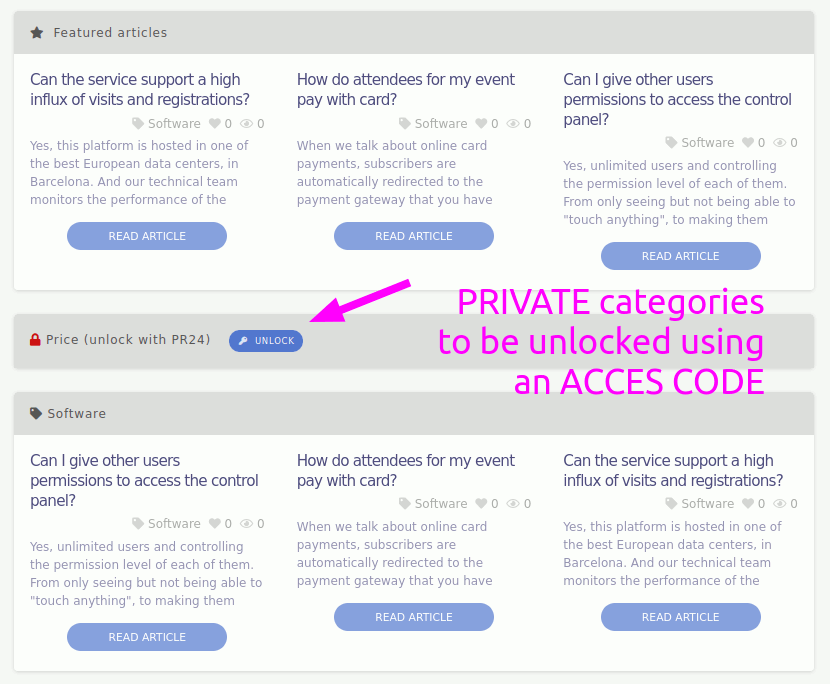Hello community, I am pleased to announce that I have finally started working on a module to complement the “Tickets” module that comes natively with Dolibarr. I’ve spent some time reading and receiving comments from both acquaintances and strangers about certain limitations, especially of the “public part” that clients/suppliers access to open a ticket.
For this reason, I have opted to develop a new frontend, very minimalist and compatible with phone screens, aiming to be very light in Kb and offer very fast navigation. But at the same time, it’s 100% integrated with Dolibarr, so we DO NOT NEED any external provider for the “helpdesk” and we can manage all the information from the Dolibarr panel with our user.
That is to say, I have included:
- a section for the ARTICLES of the “Knowledge Center” (native to Dolibarr, you have to activate it in “Modules”)
- a section for the personal TICKETS of each user (you need to activate the “Tickets” module)
Features of which I am very proud:
-
in the search query among the knowledge articles (or FAQs) I am implementing the use of chatGPT “embeddings”, through the OpenAI API, which you can optionally activate if you want from the settings, by entering your OpenAI API key. However, you must register on the OpenAI API Platform, but it’s quick and very economical… probably a single euro allows you to handle more than 10,000 search queries from your visitors.
-
the ticket system (opening a new ticket or consulting existing ones) will require a VERY SIMPLE but I believe HIGHLY EFFECTIVE authentication system: each time a client “accesses” they are sent a TEMPORARY AND UNIQUE 6-digit code that must be validated in the “access” window. But we are not exactly talking about a “login”, because my module will not create any “user in Dolibarr” for these types of queries.
Crowdfunding: Early Access at a discounted price
For the development and launch of this module, I have implemented an “Early Access” approach. This model is ideal for those who recognize the value and potential of my work, offering them the opportunity to acquire the module at an initial price that is four times lower than the final price. This initial price will increase progressively every 15 days, reaching the final price over a period of one and a half months.
This strategy not only facilitates the funding of the module’s development from the first week but also works similarly to a “crowdfunding” scheme. By purchasing the module now, you not only get a more advantageous price but also ensure free lifetime updates. This means that, in the coming weeks, you will receive a fully developed version of the module, including all the functionalities promised in this document.
- Final price: €40 (excluding VAT).
- Launch price: €10.
- Price increase: Every 15 days, the price will increase by €10, reaching €40 in a total of one and a half months.
That’s why I’m posting this announcement in the forum, to invite you to support this development if you are interested in having such a module.
Also, please, any questions or constructive suggestions, leave them here.
Demo: https://demo.bimex.tech/htdocs/custom/ticketplus/
Dolistore: https://www.dolistore.com/en/modules/2056-Ticket-Plus—HelpDesk.html






